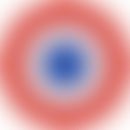Synonym(s)
DefinitionThis section has been translated automatically.
Glycol (from Greek glykys = sweet), also known as ethylene glycol, is the simplest dihydric alcohol (HO-CH2-CH2OH). Glycol is produced synthetically. It is a colourless, syrupy, sweet-tasting liquid. Gylcol is miscible with water, ethanol, glycerol and acetone. Less with ether.
General informationThis section has been translated automatically.
In cosmetic products, glycol is used as a moisturizer, solvent and viscosity regulator.
In technical applications, glycol serves as an antifreeze, in the plastics and cellulose industry as a plasticizer. Glcol is also used for room disinfection.
Gylcol must not be used in the food industry and in cosmetics.
In higher concentrations glycol can cause skin irritations.
Note(s)This section has been translated automatically.
In general, glycols are also called dialcohols (divalent alcohols), which are derived from ethylene glycol (so-called 1,2-diols or vicinal diols). Propylene glycol is an example of this.
Glycols are also those substances that are formed by condensation of ethylene glycol: such as diethylene glycol (DEG), triethylene glycol (TEG) and other ethylene glycol condensates (polyethylene glycols).
The glycol group also includes numerous glycol esters (e.g. glycol cetearate, glycol distearate, glycol dilaurate, glycol dibehenate) which are used in cosmetic formulations.




